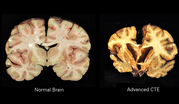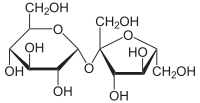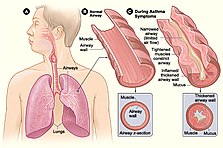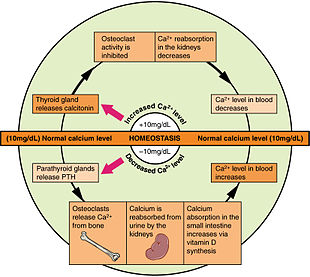- Hits: 13163
We're for all- ALL are for us for the greater interest of Humanism-Truth-Facts-Friendship-Unity-Participation including Physico-Mental Sound Health with Spirituality enrichment through ''TOTAL HEALTH SOLUTION'' to a Well-furnished GOALofTruth alloted for all in real sense ;
From wikipedia & other reliable sources ( Poets, Writers, Thinkers, Researchers, Free Lancers, Philosophers, Theologists, Scientists, Orators, Sociologists and Photographers +Artists-Musicians & etc.) we can learn as follows :
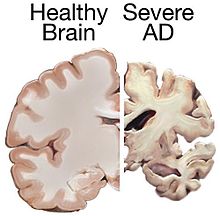
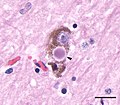
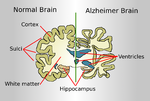
''Dementia is a disorder which manifests as a set of related symptoms, which usually surfaces when the brain is damaged by injury or disease.[2] The symptoms involve progressive impairments in memory, thinking, and behavior, which negatively affects a person's ability to function and carry out everyday activities. Aside from memory impairment and a disruption in thought patterns, the most common symptoms include emotional problems, difficulties with language, and decreased motivation. The symptoms may be described as occurring in a continuum over several stages.[10][a] Consciousness is not affected. Dementia ultimately has a significant effect on the individual, caregivers, and on social relationships in general.[2] A diagnosis of dementia requires the observation of a change from a person's usual mental functioning, and a greater cognitive decline than what is caused by normal aging.[12]
Several diseases and injuries to the brain, such as a stroke, can give rise to dementia. However, the most common cause is Alzheimer's disease, a neurodegenerative disorder.[2] The Diagnostic and Statistical Manual of Mental Disorders, Fifth Edition (DSM-5), has re-described dementia as either a mild or major neurocognitive disorder with varying degrees of severity and many causative subtypes. The International Classification of Diseases (ICD-11) also classes dementia as a neurocognitive disorder (NCD) with many forms or subclasses.[13] Dementia is listed as an acquired brain syndrome, marked by a decline in cognitive function, and is contrasted with neurodevelopmental disorders. Causative subtypes of dementia may be based on a known disorder, such as Parkinson's disease, for Parkinson's disease dementia; Huntington's disease, for Huntington's disease dementia; vascular disease, for vascular dementia; HIV infection, causing HIV dementia; frontotemporal lobar degeneration for frontotemporal dementia; or Lewy body disease for dementia with Lewy bodies, and prion diseases. More than one type of dementia existing together is known as mixed dementia.[14]
Many NCDs may be caused by another medical condition or disorder that includes brain tumours, and subdural hematoma; endocrine disorders such as hypothyroidism, and hypoglycemia; nutritional deficiencies including thiamine, and niacin; infections, immune disorders, liver or kidney failure, metabolic disorders such as Kufs disease, and some leukodystrophies, and neurological disorders such as epilepsy, and multiple sclerosis. Some of the neurocognitive deficits may sometimes show improvement with treatment of the medical condition.[15]
Diagnosis is usually based on history of the illness and cognitive testing with imaging. Blood tests may be taken to rule out other possible causes that may be reversible, such as hypothyroidism (an underactive thyroid), and to determine the subtype. One commonly used cognitive test is the Mini–Mental State Examination. The greatest risk factor for developing dementia is aging, however dementia is not a normal part of aging. Many people aged 90 and above show no signs of dementia.[16] Several risk factors for dementia, such as smoking and obesity, are preventable by lifestyle changes. Screening the general older population for the disorder is not seen to affect the outcome.[17]
Dementia is currently the seventh leading cause of death worldwide and has 10 million new cases reported every year[2] (one every ~3 seconds). There is no known cure for dementia. Acetylcholinesterase inhibitors such as donepezil are often used and may be beneficial in mild to moderate disorder. The overall benefit, however, may be minor. There are many measures that can improve the quality of life of people with dementia and their caregivers. Cognitive and behavioral interventions may be appropriate for treating associated symptoms of depression
- Hits: 1119
We're for all- ALL are for us for the greater interest of Humanism-Truth-Facts-Friendship-Unity-Participation including Physico-Mental Sound Health with Spirituality enrichment through ''TOTAL HEALTH SOLUTION'' to a Well-furnished GOALofTruth alloted for all in real sense ;
From wikipedia & other reliable sources ( Poets, Writers, Thinkers, Researchers, Free Lancers, Philosophers, Theologists, Scientists, Orators, Sociologists and Photographers +Artists-Musicians & etc.) we can learn as follows :
''Headache is the symptom of pain in the face, head, or neck. It can occur as a migraine, tension-type headache, or cluster headache.[1][2] There is an increased risk of depression in those with severe headaches.[3]
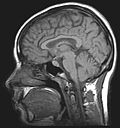

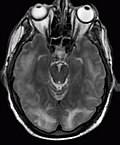
Headaches can occur as a result of many conditions. There are a number of different classification systems for headaches. The most well-recognized is that of the International Headache Society, which classifies it into more than 150 types of primary and secondary headaches. Causes of headaches may include dehydration; fatigue; sleep deprivation; stress;[4] the effects of medications (overuse) and recreational drugs, including withdrawal; viral infections; loud noises; head injury; rapid ingestion of a very cold food or beverage; and dental or sinus issues (such as sinusitis).[5]
Treatment of a headache depends on the underlying cause, but commonly involves pain medication (especially in case of migraine or cluster headache).[6] A headache is one of the most commonly experienced of all physical discomforts.[7]
About half of adults have a headache in a given year.[3] Tension headaches are the most common,[7] affecting about 1.6 billion people (21.8% of the population) followed by migraine headaches which affect about 848 million (11.7%).
- Hits: 1172
We're for all- ALL are for us for the greater interest of Humanism-Truth-Facts-Friendship-Unity-Participation including Physico-Mental Sound Health with Spirituality enrichment through ''TOTAL HEALTH SOLUTION'' to a Well-furnished GOALofTruth alloted for all in real sense ;
From wikipedia & other reliable sources ( Poets, Writers, Thinkers, Researchers, Free Lancers, Philosophers, Theologists, Scientists, Orators, Sociologists and Photographers +Artists-Musicians & etc.) we can learn as follows :

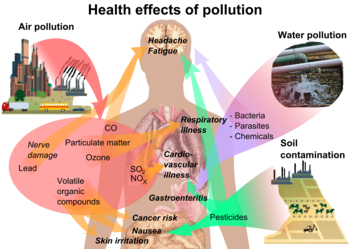
""Love encompasses a range of strong and positive emotional and mental states, from the most sublime virtue or good habit, the deepest interpersonal affection, to the simplest pleasure.[1][2] An example of this range of meanings is that the love of a mother differs from the love of a spouse, which differs from the love for food. Most commonly, love refers to a feeling of a strong attraction and emotional attachment.[3][4][5]
Love is considered to be both positive and negative, with its virtue representing human kindness, compassion, and affection, as "the unselfish loyal and benevolent concern for the good of another" and its vice representing human moral flaw, akin to vanity, selfishness, amour-propre, and egotism, as potentially leading people into a type of mania, obsessiveness or codependency.[6][7] It may also describe compassionate and affectionate actions towards other humans, one's self, or animals.[8] In its various forms, love acts as a major facilitator of interpersonal relationships and, owing to its central psychological importance, is one of the most common themes in the creative arts.[9] Love has been postulated to be a function that keeps human beings together against menaces and to facilitate the continuation of the species.[10]
Ancient Greek philosophers identified six forms of love: essentially, familial love (in Greek, Storge), friendly love or platonic love (Philia), romantic love (Eros), self-love (Philautia), guest love (Xenia), and divine love (Agape). Modern authors have distinguished further varieties of love: unrequited love, empty love, companionate love, consummate love, infatuated love, self-love, and courtly love. Numerous cultures have also distinguished Ren, Yuanfen, Mamihlapinatapai, Cafuné, Kama, Bhakti, Mettā, Ishq, Chesed, Amore, Charity, Saudade (and other variants or symbioses of these states), as culturally unique words, definitions, or expressions of love in regards to a specified "moments" currently lacking in the English language.[11][12][13]
Scientific research on emotion has increased significantly over the past two decades. The color wheel theory of love defines three primary, three secondary and nine tertiary love styles, describing them in terms of the traditional color wheel. The triangular theory of love suggests "intimacy, passion and commitment" are core components of love. Love has additional religious or spiritual meaning. This diversity of uses and meanings combined with the complexity of the feelings involved makes love unusually difficult to consistently define, compared to other emotional states.



